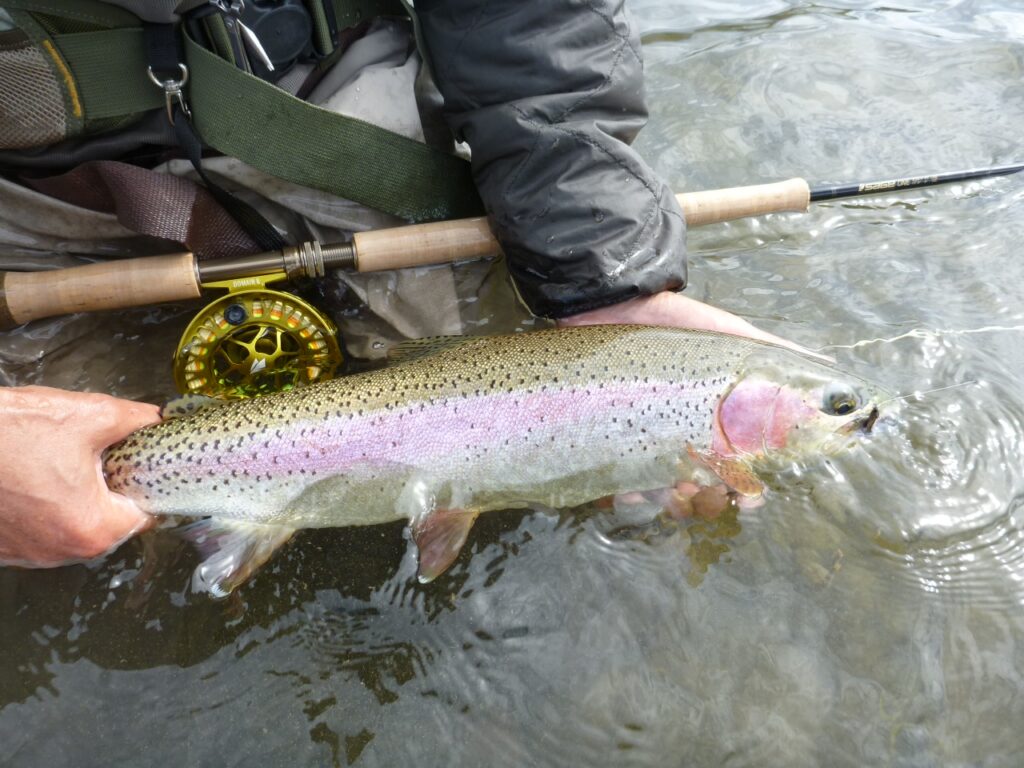Stimulators, Sofa Pillows, Yellow Sallies and Girdle Bugs are all members of the Hall of Fame of Fishing Flies! They are synonymous with the famous stonefly hatches that occur on most rivers and streams of North America. In some western states, these hatches have an almost cult-like following as anglers move upstream along with emergences as they progress. Imagine the biggest trout in the river exploding onto the surface as it engulfs another fluttering adult stonefly. It’s like a “quarter pounder with cheese” meal that no trout can resist.
Where Stoneflies Are Found
B.C. rivers are home to several species of stoneflies; trout, char, and whitefish feed on the nymphal and adult stages of these insects. Prime habitat for stonefly nymphs is the rocky bottom of a river’s faster-moving sections. These insects require clean, well-oxygenated water to survive.

Stonefly Biology and Lifecycle
Stoneflies undergo an incomplete metamorphosis which includes the nymphal or larval stage and the adult stage. Depending on the species, stoneflies can spend up to three years in the nymphal stage before emergence into an adult. During an actual hatch, mature nymphs crawl along the bottom of the river to shore, and then crawl out of the water onto exposed rocks or shoreline vegetation. During their movement to shore, nymphs get swept off the bottom and become easy prey for fish. The adult form emerges from its old nymphal shuck, and eventually flies off to mate.
Stonefly nymphs are easily recognized by their prominent two tails, two short antennae, and two wingcases. They can be from 20 to 45 millimetres in length, and range in colour from a yellowy-olive to brown to black. Adults display similar identifying features of the two prominent tails and antennae, along with two sets of wings which are folded flat over their abdomens.
It’s easy to determine whether stoneflies are present in a river by simply wading into faster-moving water, and picking up a rock to see if any nymphs are clinging to its underside. Often, if an emergence has occurred or is occurring, there will be empty nymphal shucks attached to dry rocks or on nearby vegetation.

Stonefly Fly-Fishing Tactics
If your timing is right, adult stoneflies will be seen on the water or flying over it, and the fish will be taking them. Fly-fishing tactics are pretty straight forward. A floating fly line can be used to fish imitations of both the nymphal and adult life stages. For nymphs, patterns like the Montana Stonefly Nymph, Golden Stonefly Nymph, or Lambroughton’s Titanic Stonefly Nymph can be cast directly upstream or quartering upstream, and allowed to drift back to you drag-free. This technique imitates real nymphs that are drifting helplessly downstream. Weighted nymph patterns will drift closer to the bottom, but the real nymphs can be found throughout the water column. Living up to three years in the nymphal stage means the stonefly nymph is always a good pattern to choose.

Stonefly Fly-Fishing Patterns
Adult stonefly imitations are dry flies, so patterns with deer hair wings or those incorporating foam in the bodies will stay afloat. Adults can be fished upstream or quartering across the stream flow. Regardless of presentation, the fly needs to drift drag-free, so mending of the fly line is critical for maintaining a natural drift. Stimulators, Sofa Pillows, and Chernobyl Ants are all good adult imitations.

Stonefly emergences can occur from early spring right through the summer months. They are a big meal, and trout and other fish species look forward to feeding on them.
Remember to check the freshwater fishing regulation synopsis for specific regulations on the river you are planning to fish.
Author: Brian Chan, Fishing Ambassador, Freshwater Fisheries Society of BC
Photo Credit: Brian Chan, Fishing Ambassador, Freshwater Fisheries Society of BC
